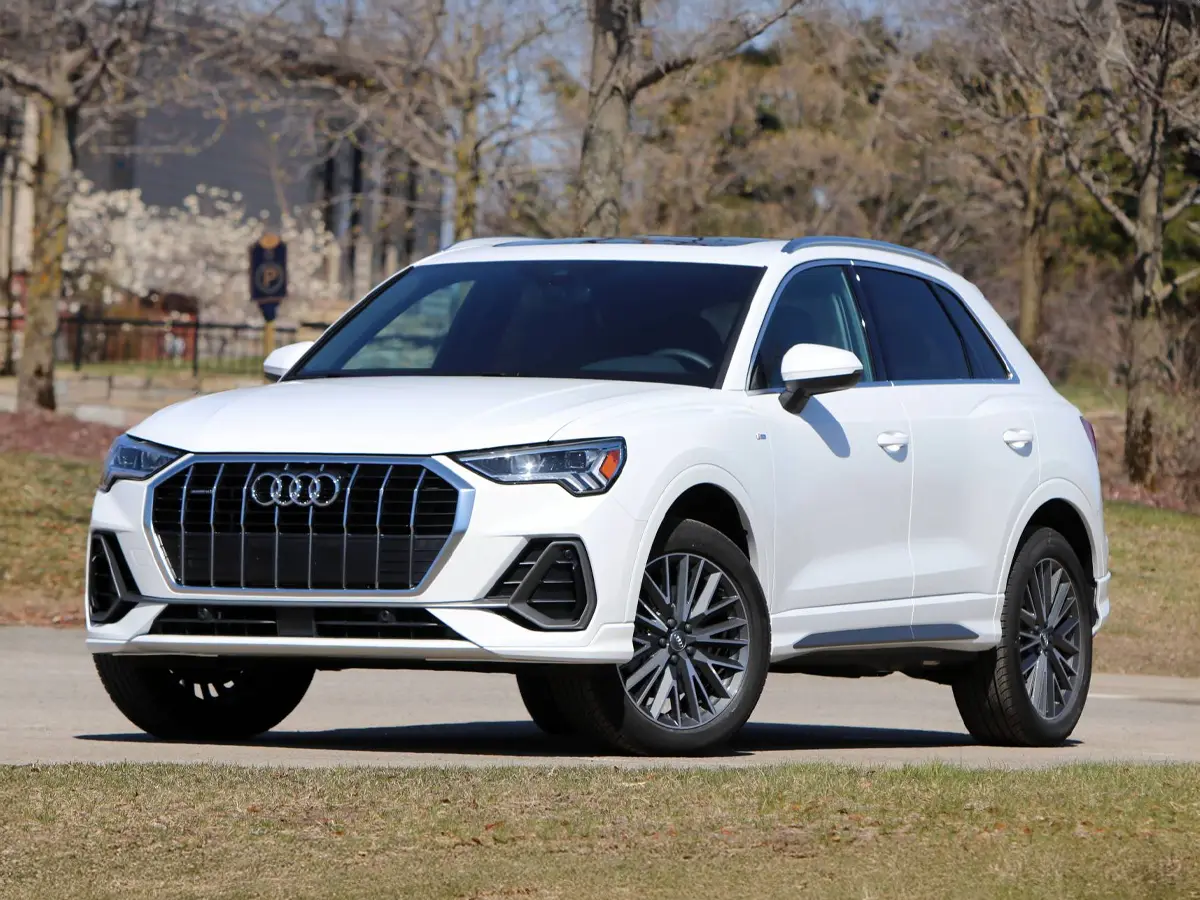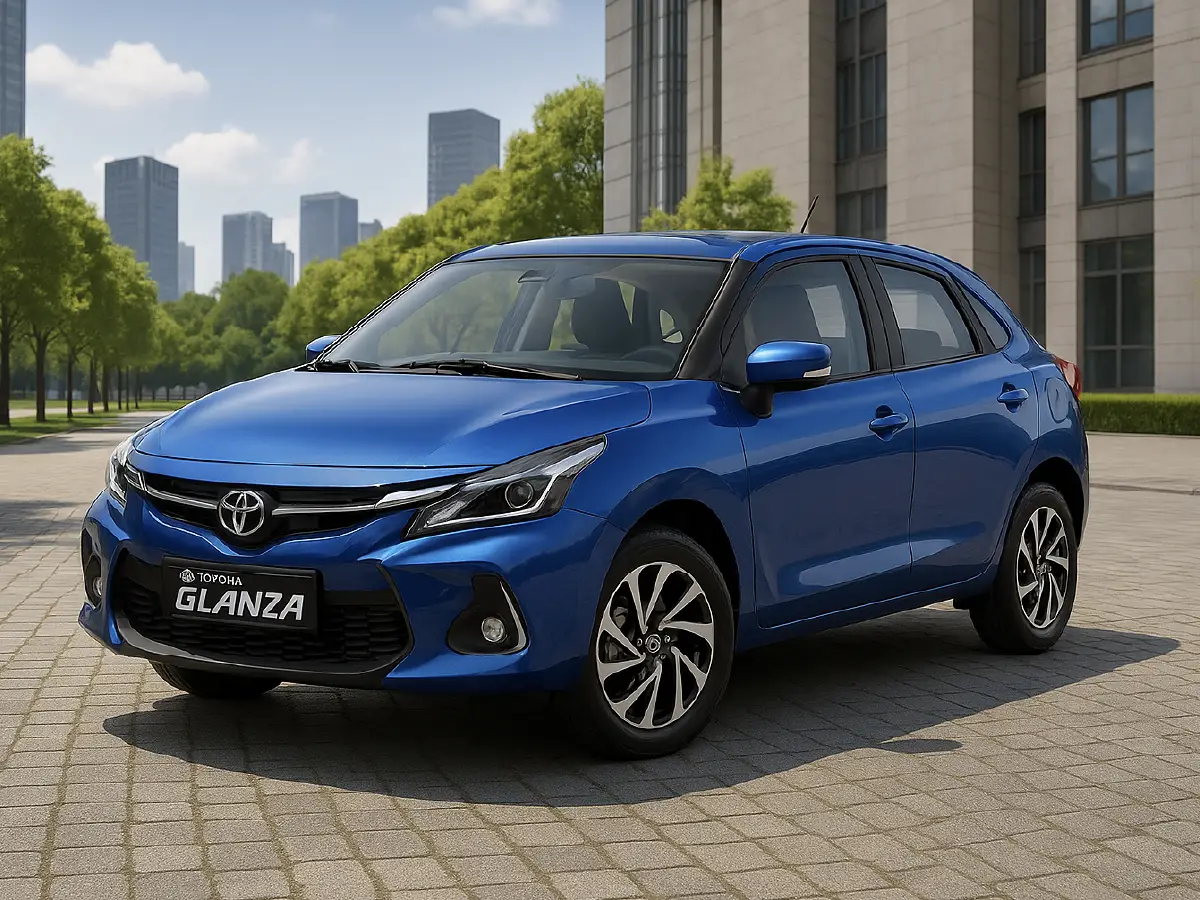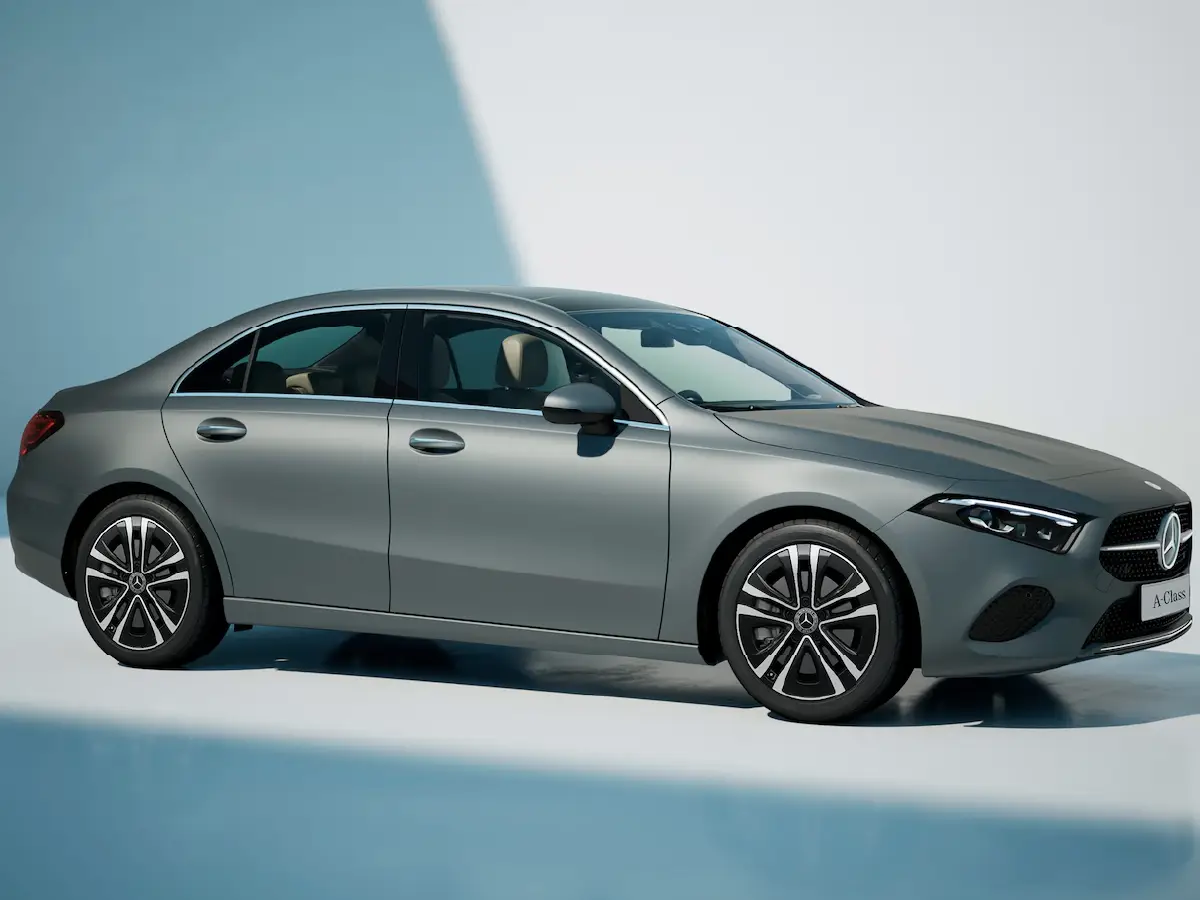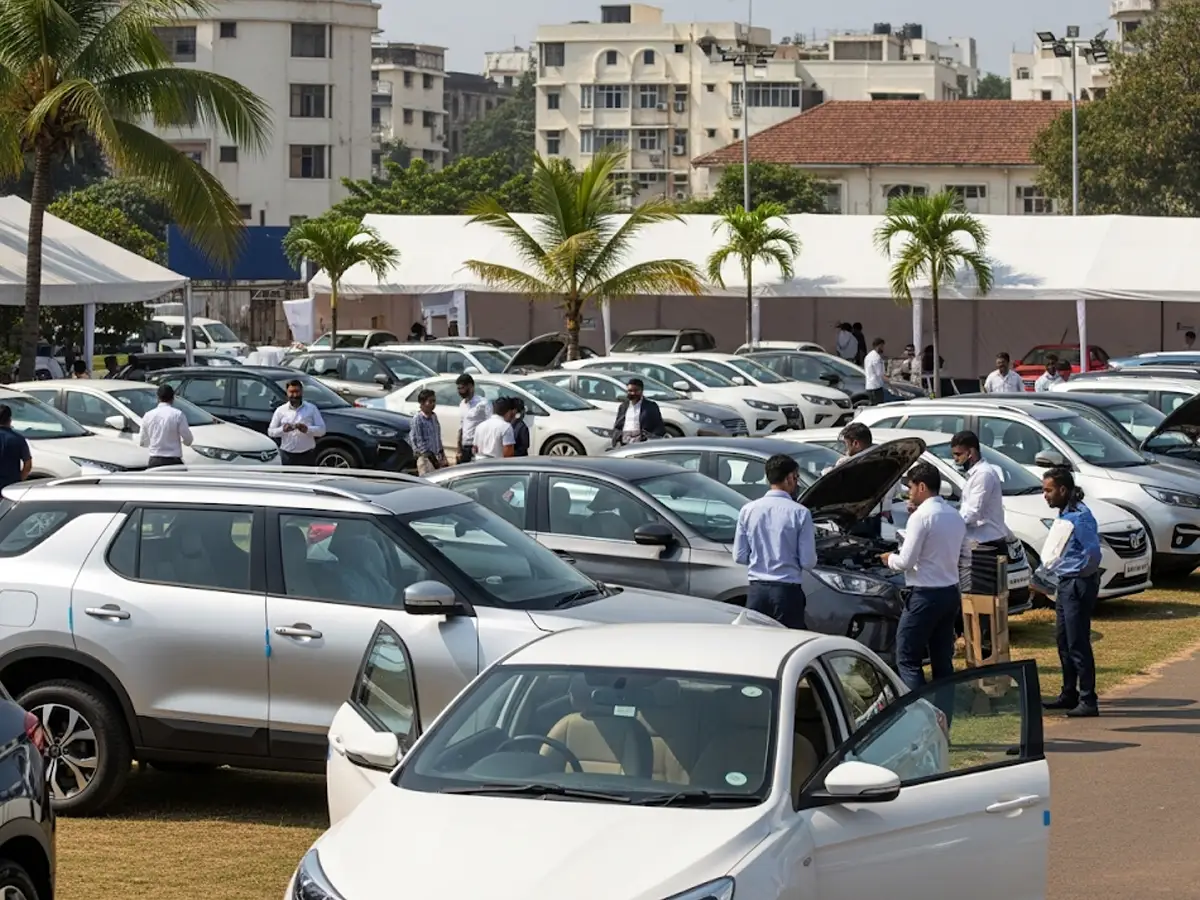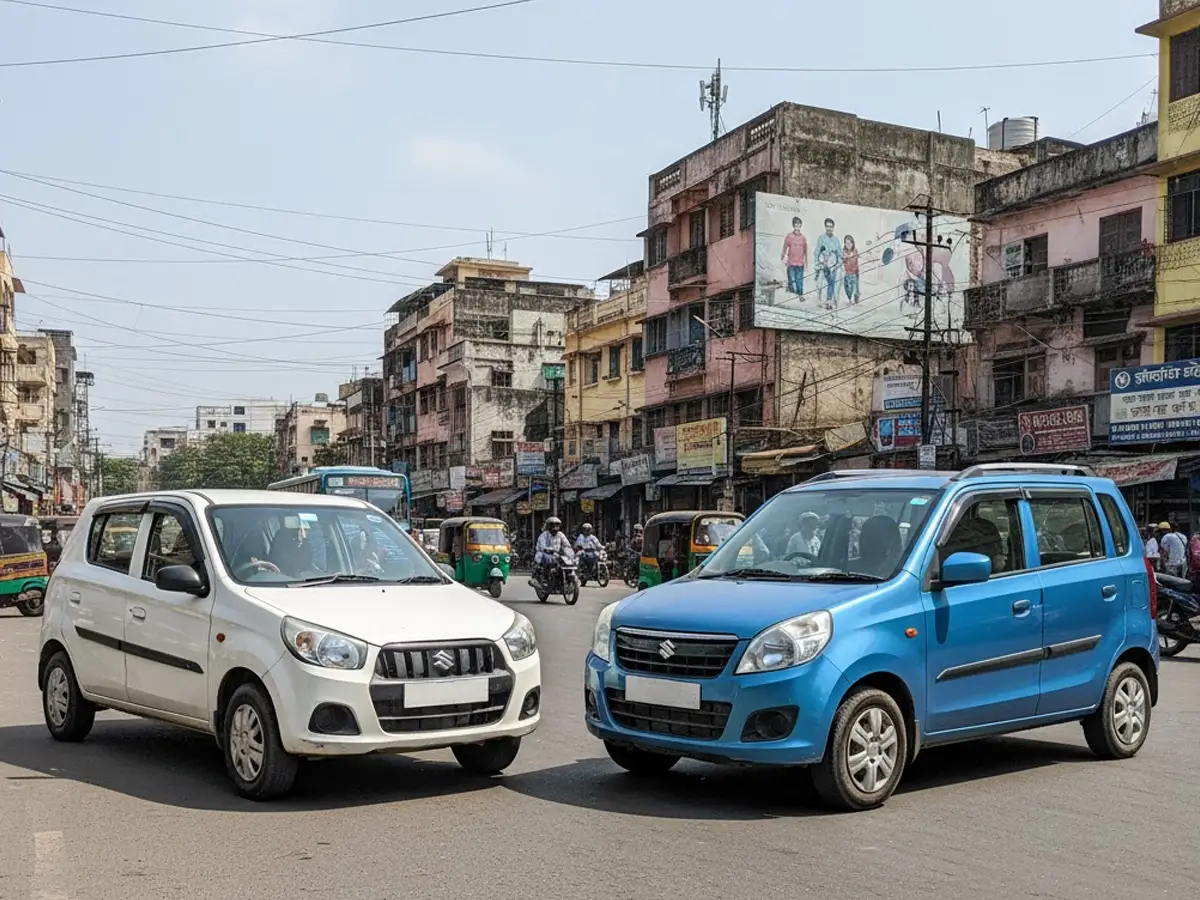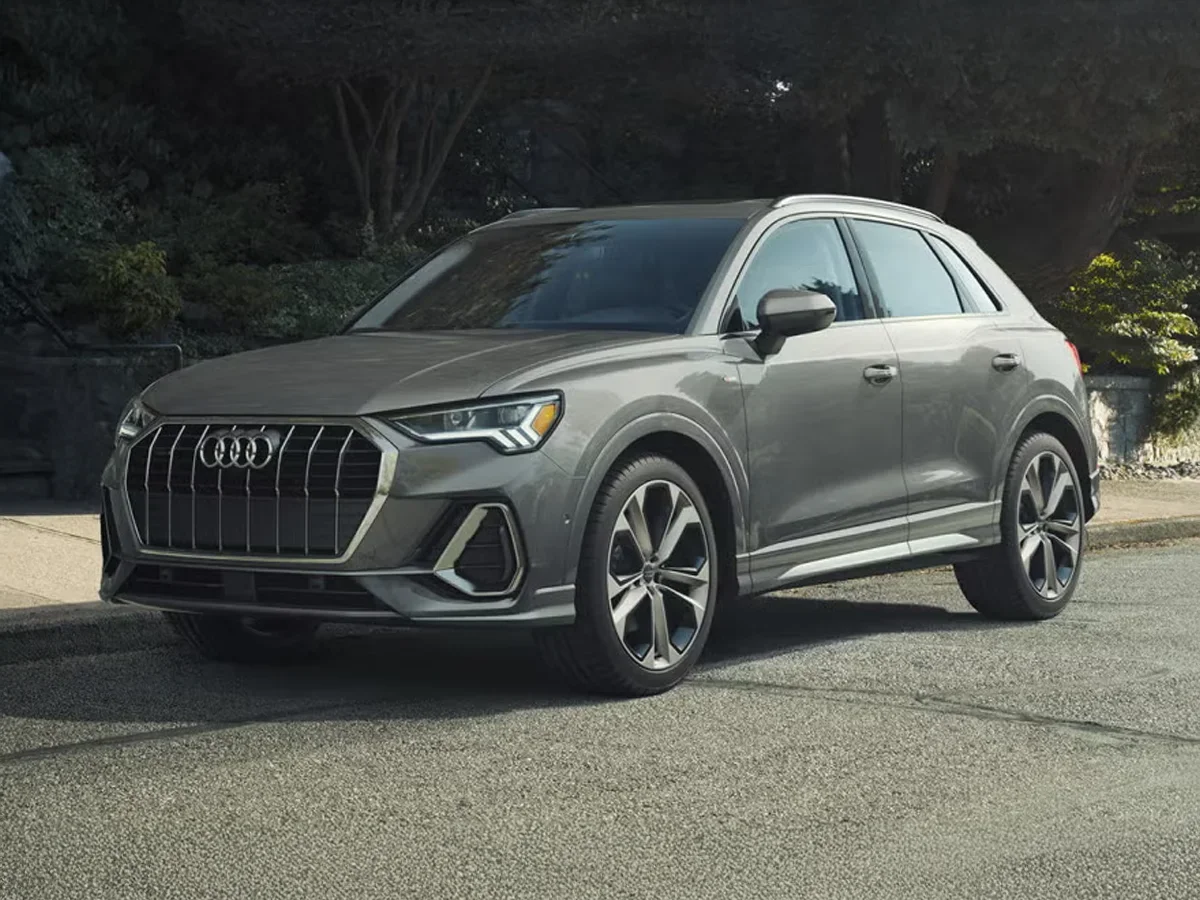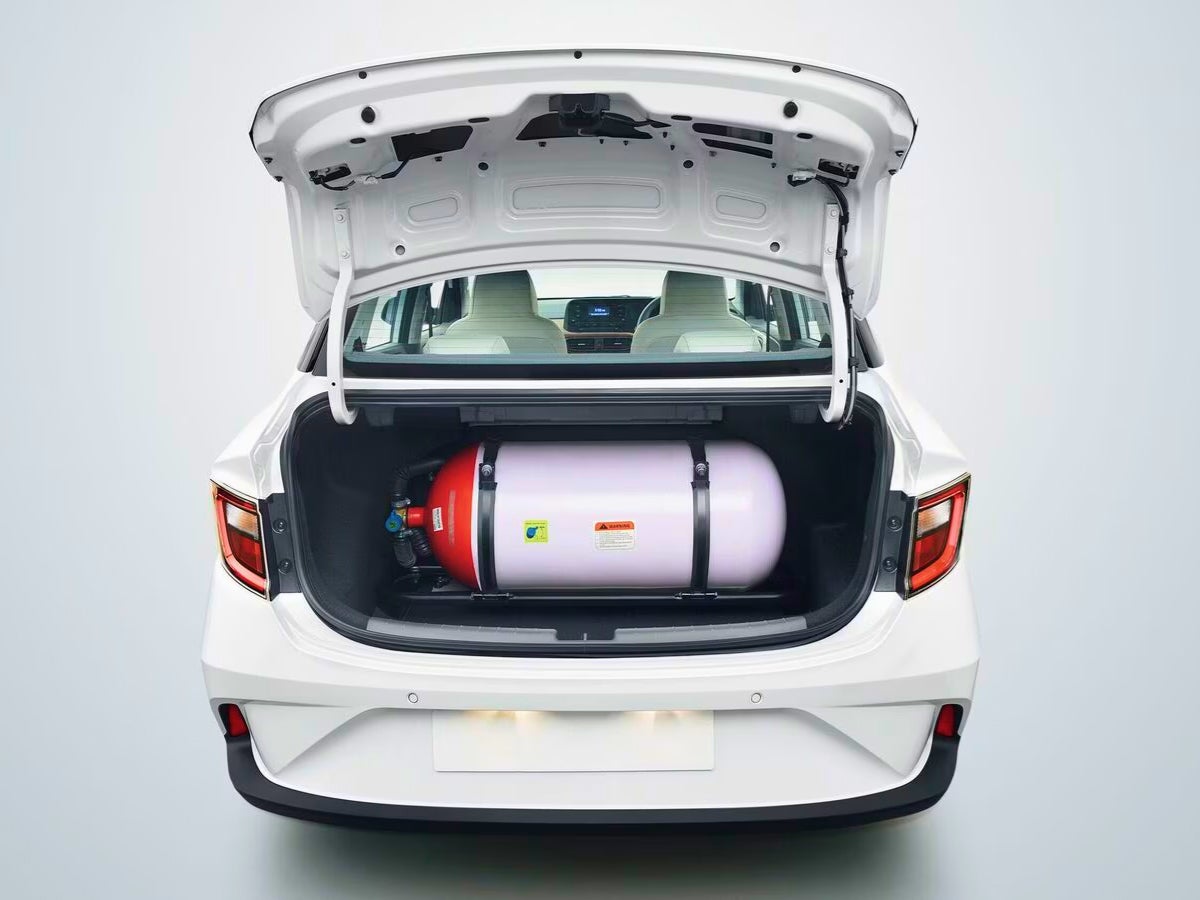

Toyota Supra MK4 – Japanese Excellence Redefined
- 1The Toyota Supra is a performance-oriented grand tourer produced from 1978 - 2002
- 2The Supra MK4 is the most popular and iconic version of the Toyota Supra
- 3The Supra MK4 comes powered by a 3.0-litre twin-turbo inline six-cylinder 2JZ engine
The history of the global automotive industry is flooded with cars from every generation. From old-school sedans to bulky pickup trucks, thousands of cars come and go, but only a few manage to leave an indelible mark and a legacy worth remembering. The Toyota Supra MK4 is one such legend that has truly made its way into the hearts of both avid fans and critics alike.
An icon in every sense, the Supra MK4 is a class apart when it comes to wooing people with a top-class engine, superior performance, timeless style, and unforgettable appeal. Ruling over a rich legacy that spans over 40 years, the history of the Supra is as special as the car itself. If you happen to be a Supra lover, then you are at the right place. In this article, we dive deep into the glorious past of the Supra badging and the greatness of the Mark 4 Supra.
The Celica Supra: The Beginning of an Era
The story of the Supra MK4 dates back to the year 1978 when the Japanese automaker launched the Toyota Celica Supra. Derived from the Latin prefix, Supra means “beyond, above, and before in time” – something that accurately describes the Toyota Supra MK4 as well as the then Celica Supra’s charm and futuristic engineering. This marked the beginning of the Supra story, a chapter that even Toyota didn’t imagine would go down in history.
The road that led to the Toyota Supra MK4
A symbol that represents automotive evolution, the Supra MK4 was and continues to be an iconic sports car that is immortal in the hearts of enthusiasts across the globe. But to truly appreciate the unparalleled legacy of the Mark 4 Supra, it's crucial to trace the journey that turned the Toyota Celica Supra into the Toyota Supra.
Prodigal Debutant: First-Gen Toyota Celica Supra MK 1 A40/A50
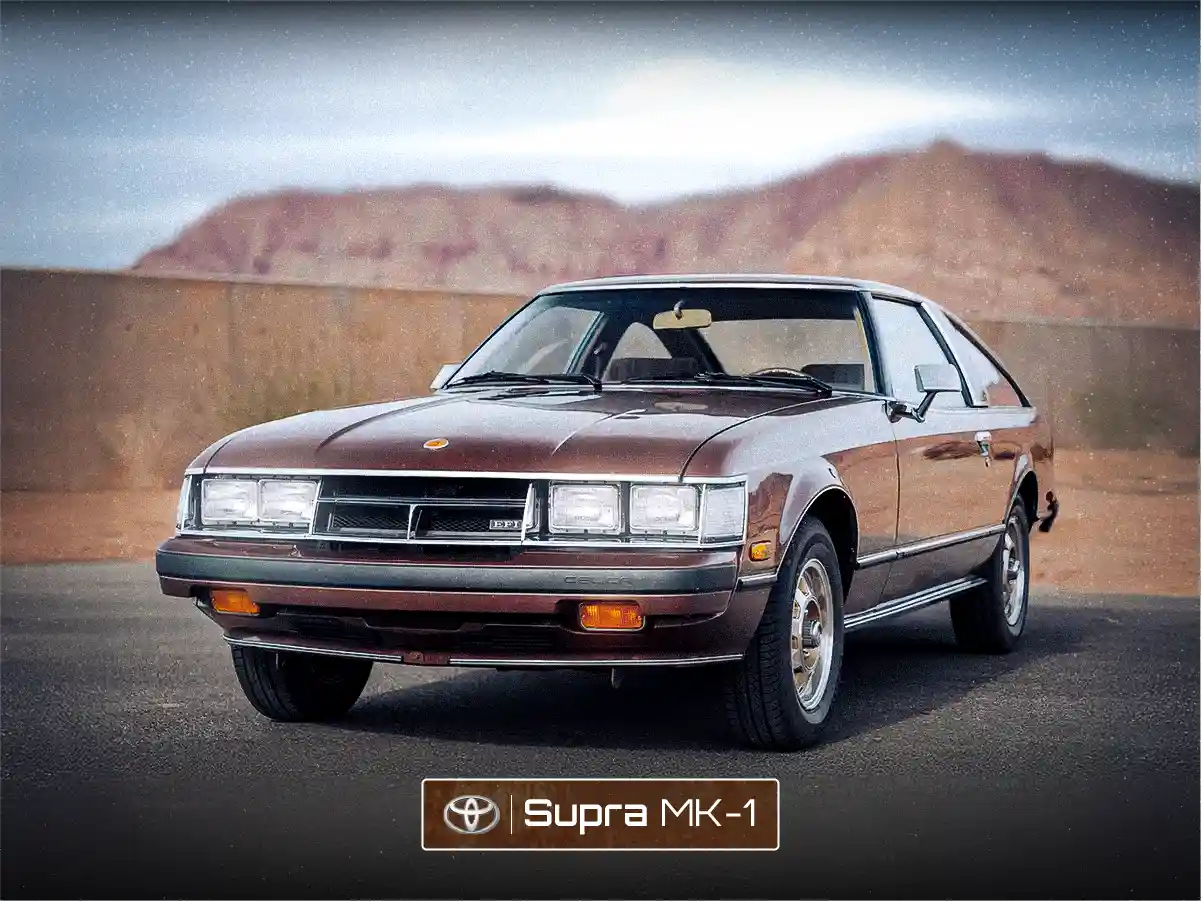
Marking the starting point in the Mark 4 Supra’s long history, the First Generation of the Toyota Supra debuted as the Toyota Celica or the Celica XX (Double X) in 1978. Developed and designed to capture the grand tourer market dominated by the Renault Z at the time, the Celica Supra was essentially a wider, longer, and more powerful version of the Celica Sedan. Appearing as a pace car in the 1979 United States Grand Prix, the MK1 was a complete heartthrob that was sold until 1981.
Powertrain Details
The first-generation Celica Supra Mark 1 was powered by Toyota’s M Family’s single camshaft straight-six engines that produced a maximum horsepower of 116 bhp. The engines were offered in different cubic capacities (1,000 cc = 1 litre) over the years, including a 2-litre, 2.6-litre, and 2.8-litre version, depending on the market. Mated to either a 5-speed manual or an optional 4-speed automatic, the Mark 1 Celica Supra engines were truly great.
| Year | Engine Details | Maximum Power | Maximum Torque | Transmission Details | Market Sold |
| 1978 to 1980 | 1,988 cc (2.0 L) M Series | 123 hp | 136 lb.ft (184 Nm) |
5-speed manual and 4-speed automatic | Japan |
| 1980 to 1981 | Japan | ||||
| 1978 to 1980 | 2,563 cc (2.6 L) M Series | 138 hp
110 hp | 136 lb.ft (184 Nm) | Japan | |
| 1979 to 1980 | North America | ||||
| 1980 to 1981 | 2,759 cc (2.8 L) M Series | 116 hp | 145 lbft (197 Nm) | 5-speed manual 4-speed automatic | World |
| Japan |
Reasons for Success
- A modification-friendly engine that made the Celica Supra MK1 rather popular among enthusiasts who often took the grand tourer for racing and drifting competitions, as well as road shows
- Smooth performance and a punch of power
- Premium interiors
- A good list of features, such as power windows, air conditioning, cruise control, etc
Revamped Sportiness: Second-Gen Toyota Celica Supra MK 2 A60

The next chapter in the Mark 4 Supra history was written when Toyota launched the second generation of the Celica Supra, or the Celica Supra XX for the Japanese market. Retaining the basic platform of the Celica, the MK2 offered a new and distinct style and a more potent engine. With the Celica Supra’s popularity picking up, the MK2 also had a fuller track career, winning races for the British Saloon Car Championship. Sold between 1981 to 1986, the Mark 2 version of the Celica Supra went on to be rather successful.
Powertrain Details
The second-generation Celica Supra Mark 2 was initially powered by Toyota’s dual overhead camshaft (DOHC) Straight-Six M Family engines, with some later trims powered by single overhead camshaft (SOHC) and DOHC Straight-Six G Family engines. In terms of cubic capacity and power offered, the M series engines were offered in a 2-litre and 2.8-litre avatar with a maximum output of 145 bhp, which was later beefed to 160 bhp.
The G series engine, on the other was available in only a 2-litre avatar, producing a maximum power of 125 bhp (single-cam) and 160 bhp (dual-cam) respectively. Available with both a 5-speed manual and a 4-speed automatic, the Mark 2 Celica Supra had a truly impressive powertrain.
| Year | Engine Details | Maximum Power | Maximum Torque | Transmission Details | Market Sold |
| 1982–1983 | 2,759 cc (2.8 L) M Series | 170 PS (125 kW; 168 hp) | 207 lb.ft (281 Nm) | 5-speed manual 4-speed automatic (1982) | Europe and United Kingdom |
| 2,759 cc (2.8 L) M Series | 174 lb.ft (235 Nm) | 5-speed W58 manual | Japan | ||
| 1984to 1985 | 2,759 cc (2.8 L) M Series | 104 kW (139 hp; 141 PS) | 167 lb.ft (226 Nm) | 5-speed manual 4-speed automatic | Australia, Switzerland and Sweden |
| 2,759 cc (2.8 L) M Series | 180 PS (132 kW; 178 hp) | 170 lb.ft (230 Nm) | Europe, United Kingdom and New Zealand | ||
| 2,759 cc (2.8 L) M Series | 175 PS (129 kW; 173 hp) | 177 lb.ft (240 Nm) | 5-speed manual | Japan | |
| 1982 | 1,988 cc (2.0 L) M Series Turbocharged I6 | 145 PS (107 kW; 143 hp) | 156 lb.ft (212 Nm) | 4-speed Automatic | Japan |
| 1983–1985 | 1,988 cc (2.0 L) M Series Turbocharged | 160 PS (118 kW; 158 hp) | 170 lb.ft (230 Nm) | ||
| 1982 | 2,759 cc (2.8 L) M Series | 145 hp (108 kW; 147 PS) | 155 lb.ft (210 Nm) | 5-speed manual 4-speed automatic |
Canada and United States |
| 1983 | 2,759 cc (2.8 L) M Series | 150 hp (112 kW; 152 PS) | 159 lb.ft (216 Nm) | 5-speed manual 4-speed automatic | |
| 1984 | 2,759 cc (2.8 L) M Series | 160 hp (119 kW; 162 PS) | 163 lb.ft (221 Nm) | 5-speed manual | |
| 2,759 cc (2.8 L) M Series | 150 hp (112 kW; 152 PS) | 159 lb.ft (216 Nm) | 4-speed automatic | ||
| 1985-1986 | 2,759 cc (2.8 L) M Series | 161 hp (120 kW; 163 PS) | 169 lb.ft (229 Nm) | 5-speed manual 4-speed automatic | |
| 1982–1985 | 1,988 cc (2.0 L) G Series | 125 PS (92 kW; 123 hp) | 174 lb.ft (235 Nm) | 5-speed manual 4-speed automatic | Japan |
| 1982–1985 | 1,988 cc (2.0 L) G Series | 160 PS (118 kW; 158 hp) | 134 lb.ft (182 Nm) | 5-speed manual |
Reasons for Success
- Performance-oriented dual-camshaft engines that replaced the earlier single-camshaft units
- A new suspension setup, which replaced the old live rear axle with independent semi-trailing arms
- Improved handling and balance
- Redesigned looks that made the Celica more aerodynamic, aggressive, and sporty
- Low profile, retractable pop-up headlights, and an integrated spoiler
State of Separation: Third-Gen Toyota Supra MK 3 A70
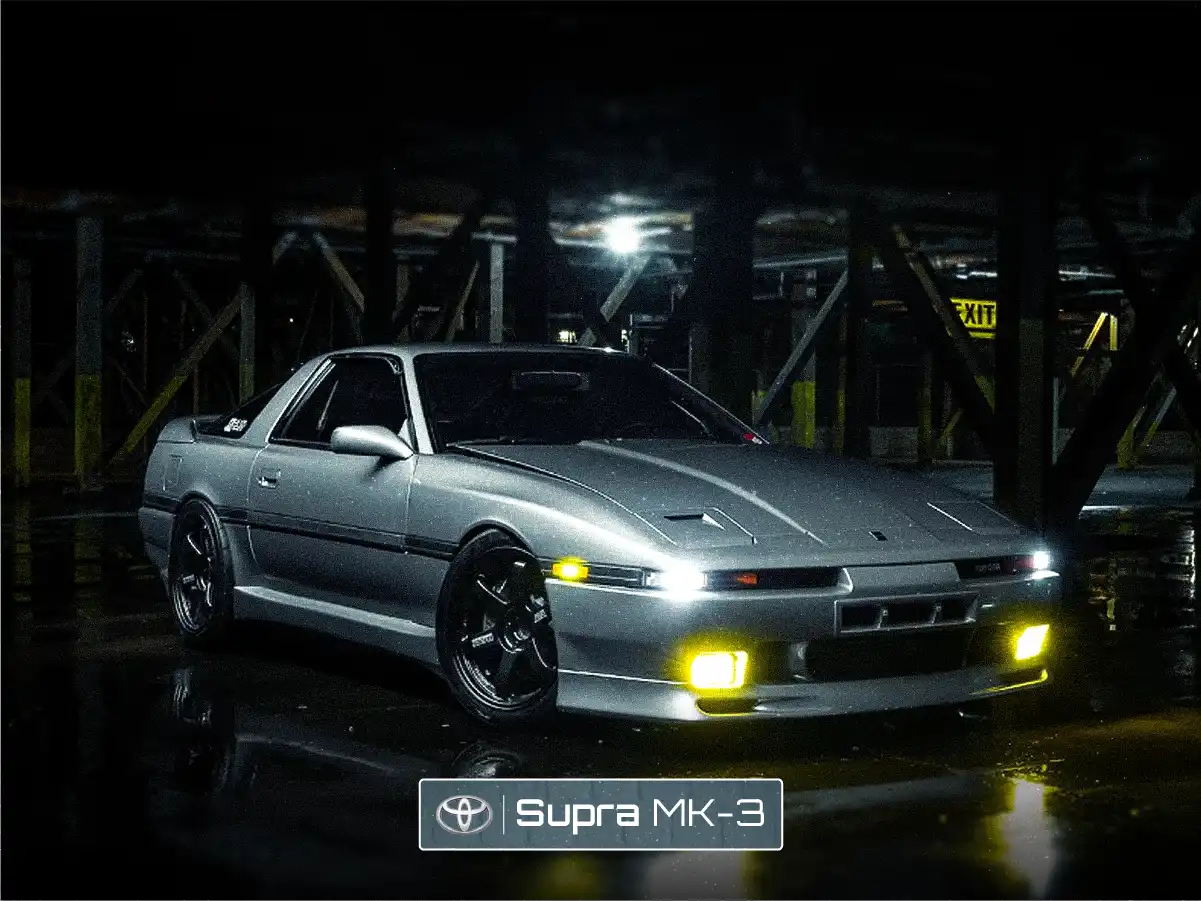
Turn another page of the Supra MK4 saga, and you will find the third-generation Supra MK3 looking at you. Yes, you read it right, the Supra MK3 formally ditched the Celica badging and touched a new milestone in its legacy that later grew into the unforgettable Mark 4 Supra. Talking about the Mark 3, the sedan offered unmatched luxury and performance along with a new coupe bodyline and improved suspension. Sold between 1986 to 1993. Had it not been for the Supra MK4, the Mark 3 version of the Supra had everything it took to be the most impressive Supra ever.
Powertrain Details
Powering the third-generation Toyota Supra Mark 3 were Toyota’s DOHC Straight-Six, M, and G Family engines that were made available both in naturally aspirated and turbocharged setups. The engines were available in different cubic capacities over the years, including a 2-litre, 2.5-litre, and 3-litre avatar. While the initially launched naturally aspirated put out a maximum of 200 bhp, the turbocharged engine added an extra oomph, taking power up to 230 bhp, with a special edition version maxing out 270 bhp as well. Much like its predecessors, transmission duties of the Mark 3 Supra were also carried out by either a 5-speed manual or a 4-speed automatic.
| Year | Engine Details | Maximum Power | Maximum Torque | Transmission Details | Market Sold |
| 1986 to 1993 | 2,954 cc (3.0 L) M Sereis | 149 kW (200 hp; 203 PS) | 196 lb.ft (266 Nm) | 5-speed W58 manual 4-speed A340E automatic | Canada, Europe, United States and Australia |
| 2,954 cc (3.0 L) M Series Turbocharged | 173 kW (232 hp; 235 PS) | 254 lb.ft (344 Nm) | 5-speed R154 manual 4-speed A340E automatic | Canada, Europe, Japan, United States and Australia | |
| 1986 to 1992 | 1,988 cc (2.0 L) G Series | 118 kW (158 hp; 160 PS) | 130 lb⋅ft (176 N⋅m) | 5-speed W58 manual 4-speed A340E automatic | Japan |
| 1,988 cc (2.0 L) G Series Twin-turbocharged | 154 kW (207 hp; 210 PS) | 180 lb.ft (244 Nm) | 5-speed W58 manual 4-speed A340E automatic | Japan | |
| 1990 to 1993 | 2,491 cc (2.5 L) 1JZ Twin Turbocharged | 206 kW (276 hp; 280 PS) | 268 lb.ft (363 Nm) | 5-speed R154 manual 4-speed A342E automatic | Japan |
Reasons for Success
- Coupe design that bridged the gap between a true-blue sports car and a comfortable sedan cruiser
- A Double wishbone suspension setup on all four wheels translates to a smoother and more nuanced ride
- Best engine refinement amongst all the Supra versions
- Reliable build quality
- Active limited slip differential delivering superior torque
Toyota Supra MK4: The Ultimate Evolution
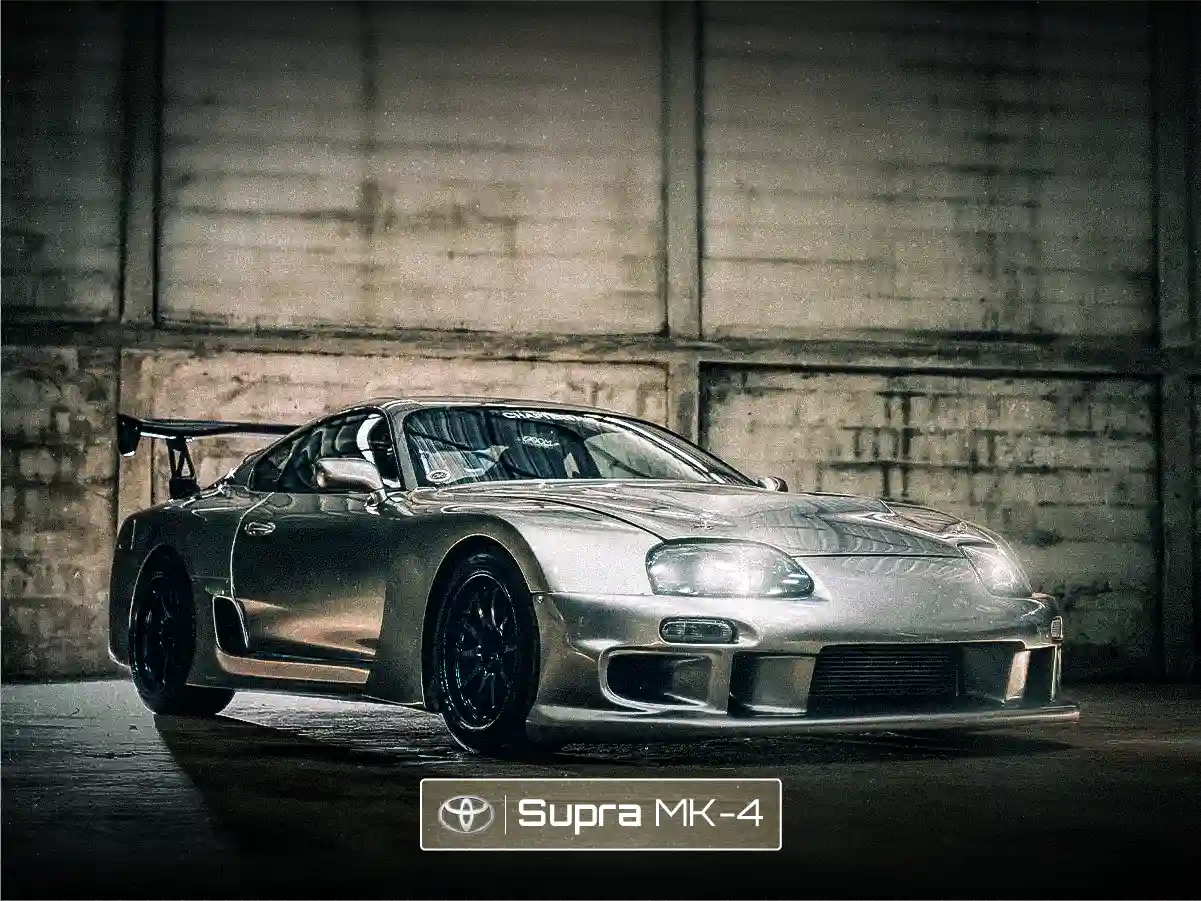
With the Japanese automotive industry witnessing its golden phase in the late 1980s and early 1990s, models like the Mazda RX7, Nissan 300ZX, and the Honda NSX started to give a tough competition to the Mark 3 Supra’s reign. While the launch of the next-generation A80 Mark 4 Supra was imminent, Toyota held on to its horses until it perfected every aspect of the Mark 4 Supra. Finally, in 1993, the curtains were raised off the fourth-generation Toyota Supra MK4.
Reimagined from the ground up, the Mark 4 Supra had everything you ever wanted from a performance-focused grand tourer. A well-proportioned bodyline, impeccable performance, and a feature-laden cabin, everything about the Supra MK4 spoke of Toyota’s brilliance. Adorned with a highly aerodynamic look, the Supra MK4 supported smooth curves, a deep bumper, and an optional spoiler along with widened wheel arches and a low profile.
Even the insides were as good, with a cockpit-style interior, slightly curved towards the driver, loaded with a host of features all within the driver’s control. Equally impressive was the safety suit of the Supra Mark 4, which included ABS, Crash-Impact Absorbing Structure, side door beams, and dual airbags.
What made the Toyota Supra MK4 so special?
Soon after the Mark 4’s launch in the United States, enthusiasts, fans, and critics alike started coming up with new superlatives to describe the Supra MK4’s charm. With performance so good that even a 3.6-litre Porsche 911 couldn’t beat it, the Supra Mark 4 was capable of hitting 0 to 60 mph in under 5 seconds. So, what makes the Supra MK4 so special that, even three decades after its launch, the sedan is still considered one of the greatest of all time? The answer lies in what powered the Supra MK4 – the Toyota 2JZ.
The 2JZ Magic
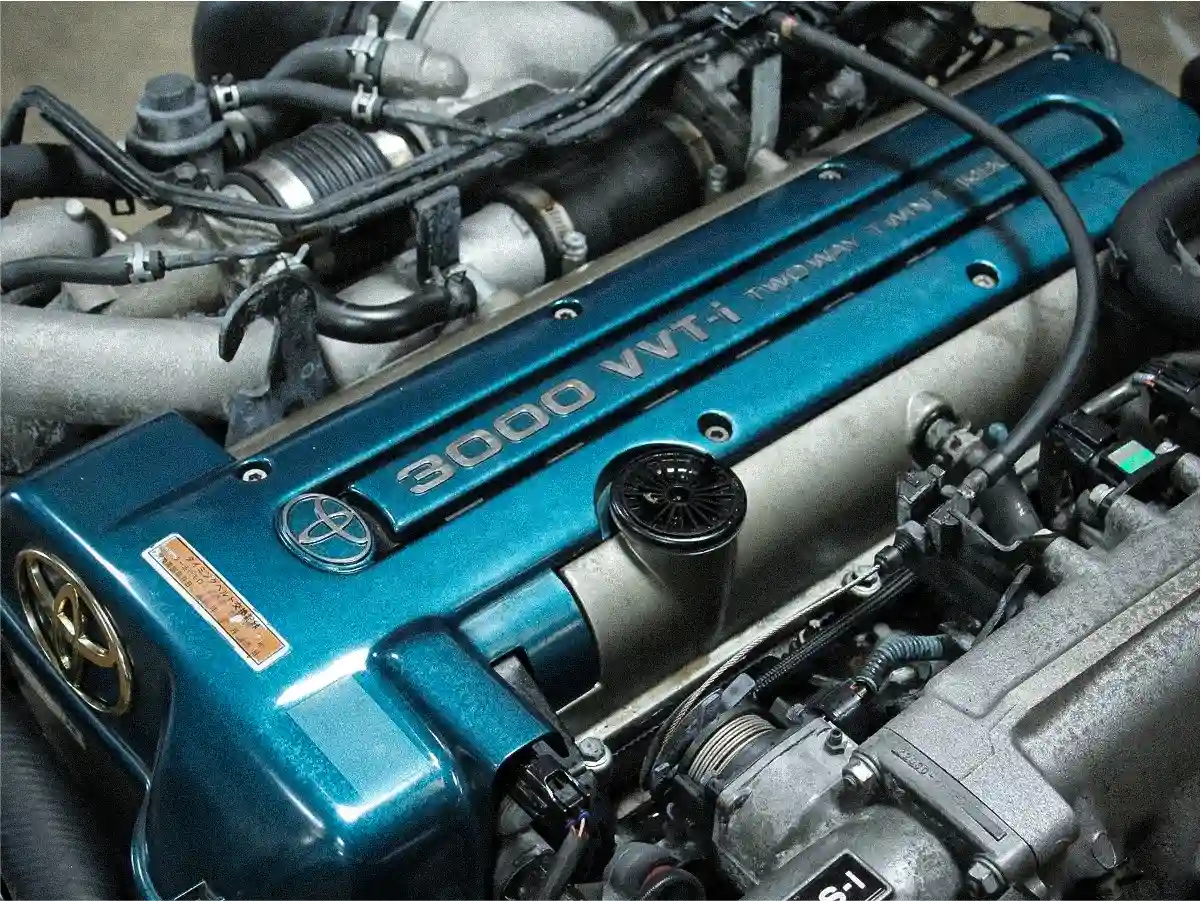
The Kohinoor of Japanese engineering, Toyota’s 3.0-litre inline six-cylinder twin-turbocharged, DOHC engine with a cast-iron block and an aluminium head, is the reason behind the mesmerising magic of the Mark 4 Supra. The story behind the development of the 2JZ is as special and interesting as the engine itself.
Back in the late 1980s and early 1990s, Japan faced a sudden rise in road accidents, with over 10,000 deaths annually. A big reason behind these rising deaths was high-speed cars. So the Japanese Domestic Market automakers entered into a “Gentleman’s Agreement” to limit the maximum power output and speed of cars offered in Japan to 280 bhp and 180 km/h, respectively. As a result, engines like the 2JZ were seriously overbuilt and highly future-proof; something that makes enthusiasts kill to get their hands on them even today.
Supra MK4 Lineup
Despite several well-made engines pushed in the market in the years following the launch of the Supra MK4, the 2JZ continued to be a massive success for time immemorial. Otherwise available in three different setups over its production years, starting from 1991 to 2007, the Toyota Supra MK4 featured two of the engine’s best configurations.
The 2JZ GE
The most common version of the 2JZ magic, the 3.0-litre 2JZ GE, used a sequential electronic fuel injection system with a wide-angle valve DOHC, cast-iron cylinder block, and aluminium cylinder heads. Despite being a naturally aspirated version of the 2JZ, the engine produced some mind-blowing power and torque figures, delivering exceptional driving dynamics. Here are the power and torque figures of the Supra MK4 2JZ GE:
| Engine | Cubic Capacity | Maximum Power Output | Maximum Torque Output | Transmission | Markets Sold |
| Toyota 2JZ GE | 2,997 cc or 3.0-litre | 222 hp | 284 Nm / 209 lb-ft | 5-speed manual or 4-speed automatic | Japan |
| 220 hp | USA, Canada |
The 2JZ GTE
The engine that defined the Mark 4 Supra, the 3.0-litre 2JZ GTE, is a twin-turbocharged inline-six-cylinder belt-driven air-intercooled DOHC engine. Much like its GE sibling, the GTE also had Toyota’s signature cast-iron block and aluminium cylinder head. Later versions of the 2JZ GTE also featured Variable Valve Timing with Intelligence (VVT-i) for better performance and efficiency. The 2JZ GTE was the engine that truly gave the Supra MK4 a legendary status, as it was one of the most modification-friendly engines, which could handle a power output of up to 1,000 hp with a stock engine, nearly 4x of what was offered by Toyota. Here are the power and torque figures of the Supra MK4 2JZ GTE:
| Engine | Cubic Capacity | Maximum Power Output | Maximum Torque Output | Transmission | Markets Sold |
| Toyota 2JZ GTE | 2,997 cc or 3.0-litre | 276 hp | 431 Nm / 318 lb-ft and 451 Nm / 333 lb-ft (VVT-i) | 6-speed manual or 4-speed automatic | Japan |
| 320 hp | 427 Nm / 315 lb-ft | USA, Canada | |||
| 325 hp | 441 Nm / 325 lb-ft | Europe |
Success and Beyond
Saying that the Toyota Supra MK4 is an iconic vehicle would be an understatement if you were to consider the grand tourer’s history that went beyond just city roads. While the Mark 4 Supra broke several sales records in almost all the countries it was exported to, it also took over the Japanese Domestic Market like a Flu, despite the Toyota Supra MK4 price being a little over affordable. But the real success of the Mark IV and its rich performance lineage came not from the retail numbers, but from the wide public reception that had its roots spread in the hearts of enthusiasts, collectors, racing fans, and even movie buffs. Here are some of the most memorable achievements of the Toyota Supra MK4 over the years:
The Enthusiast’s Dream
If you happen to be a hard-core performance-car enthusiast, chances are that you have dreamt of owning a Toyota Supra MK4 at some point in your life. Well, we can't blame you for the desire, as the Supra Mark 4 was and continues to be an enthusiast’s dream. The highly under-utilised potential of the 2JZ engine in the Supra is a breeding ground for engine-heads to build their dream project. With tasteful modifications and turbo upgrades, the 2JZ of the Mark 4 Supra is known to have delivered insane amounts of power and torque with figures, with some examples (Grannas Racing of Hollidaysburg, Pennsylvania developed Toyota Supra) having been tuned to deliver as high as 2,100 bhp. Nurturing the creativity of those who live and breathe engines, the Supra MK4’s high-octane performance is something that can still drive you crazy!
Racing-Fan Favourite

In addition to being a popular mass market performance grand tourer, the Toyota Supra MK4’s legendary 2JZ engine and iconic aerodynamic design also made it a fan favourite in the world of Motorsports. In its #35 Castrol TOM’s Toyota Supra avatar, the MK4 dominated the All-Japan Grand Touring Car Championship (JGTC), winning several championships from 1997 to 2002, captivating audiences worldwide.
The Supra MK4 also took part in the 24 Hours of Le Mans – an annual endurance sports car race to finish 14th in 1995. Even in the world of drag racing, the Mark 4 Supra has had a special place where highly modified versions of the MK4 built by HKS have taken part and set records in several drag race events in Japan.
In Popular Culture
Adding another feather in the Toyota Supra MK4’s cap was when Paul Walker’s Brian O Connor drove the Supra MK4 in the popular high-speed flick, Fast and Furious and 2 Fast 2 Furious. The grand tourer was also an integral part of racing video games such as Need for Speed, Forza Horizon 4, Gran Turismo, and Assetto Corsa.
Bottom Line
Now that you know all about the history of the Toyota Supra MK4, you can appreciate the role the Mark 4 Supra has played in the evolution of the global automotive industry. More than just a vehicle, the Toyota Supra MK4 is a testament to Toyota’s rich engineering and innovation legacy that continues to impress millions around the world. With its rich racing legacy, high-performance engine, reliable build quality, and iconic status, the Supra MK4 is a heritage that will be explored by generations to come.
Frequently Asked Questions
Expand all



